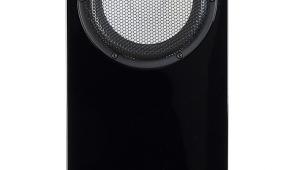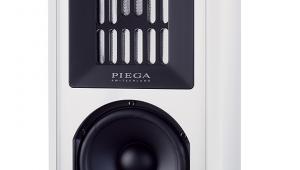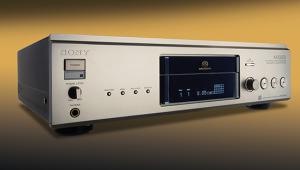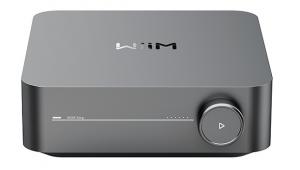Jbl Studio 580 (£1300)

Following the success of its keenly-priced Studio 1 models, JBL ups the ante with a no less distinctive Studio 5 range
Compared to the 190 [HFN May ’11] the costlier 580 might appear to be a retrograde step. Whereas the 190 is a four-driver threeway design with twin bass units, a directradiating midrange driver and horn-loaded tweeter, the 580 is a three-driver two-way with twin bass-mid drivers and horn-loaded tweeter. But if horn loading is a good thing, as JBL believes, this is actually an advantage since in the 580 the horn-loaded tweeter operates from 1.5kHz upwards, whereas in the 190 you have to wait until 3.2kHz – over an octave higher – for the horn to join the party.
Horn loading used often to be regarded (and still is) merely as a means to enhance a speaker’s sensitivity. But when you combine a horn-loaded tweeter with direct-radiating bass-mid units, as JBL does here, there’s only so much of this potential you can exploit because the latter will inevitably determine the speaker’s overall sensitivity. So JBL deploys horn loading to different effect: to reduce distortion and increase dynamic range, and to control directivity. As JBL puts it in the Studio 580 product leafl et, ‘Controlled directivity at ear level of seated listeners minimizes unwanted HF interaction with walls and furniture’. Of course, this flies in the face of an alternative wisdom, espoused by other speaker manufacturers, that treble dispersion needs to be enhanced for more realistic sound. But that argument is one that has been raging for decades and isn’t about to be resolved to everyone’s satisfaction.
To draw a further octave of lower frequency extension out of the horn tweeter has, as you’d expect, necessitated that it have an increased mouth area. So while the horn flare in the 580 is bi-radial, as it is in the 190, now the horn occupies the whole width of the front baffle. One result is that the distinctive ‘weave’ design of the Series 1 has been dispensed with, in favour of a cosmetic treatment that looks, to my eye, a deal classier and more elegant. The horn mouth is uncovered, with a grille the shape of an elongated, truncated teardrop beneath it covering the twin bass-mid units, which are recessed within the glass-fi lled ABS front baffle cover.
DIFFERENT SPECS
Also different is the drive unit at the horn throat: in the 190 it’s a CMMD (ceramic metal matrix diaphragm) Lite dome whereas in the 580 a one-piece Teonex diaphragm/ surround assembly is used instead, albeit of the same 25mm diameter. Teonex is a polyethylene-naphthalate polymer which JBL claims is stiffer than conventional materials and delivers ‘tighter, more precise mid and high frequencies’. Both horn drivers are magnetically shielded, as are the twin 165mm bass-mid units. Here the diaphragm material – JBL’s long-favoured PolyPlas doped cellulose fibre – is the same as in the 190 but, if I interpret the two spec sheets correctly, the Studio 580’s drivers benefit from a cast chassis and JBL’s SFG (symmetrical field geometry) magnetic circuit, which uses an undercut pole-piece to linearise fl ux distribution either side of the magnet gap and dual aluminium magnetic shorting rings to reduce inductance modulation, thereby reducing distortion.
While we’re tracing the differences between 580 and 190, mention should also be made of the 580’s cabinet – which is actually shorter and shallower than the 190’s but 50mm wider at the front – having a sloping top panel and non-parallel side walls, a result of its tapering front to rear, to help control internal air resonances. JBL describes the cabinet as a ‘rigid, heavily braced design’ but the MDF walls are only of 19mm thickness – nothing exceptional – and the large side panels appear to be pretty resonant when rapped with a knuckle. Two finishes are offered, black or cherry, and plastic outriggers are provided for attachment to the bottom of the enclosure, to carry the supplied fl oor spikes a little outboard of the base for enhanced stability.
GETTING NOTICED
A glance at the lab report will do nothing to raise expectations of the Studio 580’s sound quality but actually it’s capable of a very appealing brand of music-making – one that isn’t characterised by the ‘me, me, me’, getyou- noticed tonal balance that has characterised some JBLs of the past.
That said, you have to set them up correctly. The key issue – as with all speakers having a rising treble response that you aim to tame by listening somewhat off-axis – is getting the toe-in right. There’s always a concern with controlled directivity horns that this won’t curtail treble energy as required, but you can adjust the 580’s perceived tonal balance benefi cially by toeing it such that the axes of the stereo pair cross behind the listening position. In practice the adjustment is quite critical – I settled for just being able to see the inner tapering side panels. Of course, you could also over-rotate the speakers so that their axes crossed in front of the listening position – an arrangement I like less because it widens the spectral disparity between the direct sound and fi rst side-wall refl ections, rather than reducing it.
In this way you can achieve a fairly neutral tonal balance from the 580 but that’s not to say that the horn tweeter sounds like a state-of-the-art direct radiating alternative. Indeed, would JBL want it to? Play pink noise through the 580 and it’s obvious that it has a distinct treble ‘character’ – one that you must accept if you’re to be happy bedfellows. Me, I came to terms with it and enjoyed the benefi ts the 580 offers. One of which is tuneful bass.
Although the 580’s low frequency output isn’t deeply extended, the nearfi eld measurements show that the roll-off begins quite gradually at about 90Hz and doesn’t achieve the full 24dB per octave roll-off of a refl ex-loaded design until below 30Hz, so clearly the bass alignment was chosen with an emphasis on good transient response.
It’s a design decision that pays off, as I discovered when playing the HDtracks 24/96 download of Christy Baron’s ‘Got To Get You Into My Life’. I’d chosen this track principally for its percussion entry and clean, clear, sibilant vocal, to help decide the optimum toe-in – but I couldn’t help but notice that the strong bass line was melodic and hangover-free.
As it also was on ‘Double Trouble’, ripped from Eric Clapton’s Just One Night [Polydor 531 827-2]. This slightly raw but thoroughly compelling live rock recording is exactly the type of source material you’d expect the 580 to thrive on, and it does. From the moment the Budokan Theatre audience starts to whistle and cry, you sense that the 580 is in its element. Then it’s ‘One, Two, Three’ and the band’s entry confirms that this JBL is both well able to convey the frisson of live performance and, as claimed, very happy to play loud.
A QUESTION OF SCALE
But it isn’t only rock music that the 580 can bring something a little special to. When the AMR CD-777 was here for review [HFN Sept ’11], I happened to be using the 580s when comparing the nonoversampling, non-filtered output modes to the filtered options, using Tony Faulkner’s recordings of the Melcer First Piano Concerto [Hyperion 16/44.1 download] and Mahler Sixth Symphony [CD rip from LSO Live LSO0038] since these were both mastered without anti-alias fi ltering. The 580 proved itself remarkably adept at revealing the improvement in image scale and dynamic heft achieved using the AMR’s NOS modes, and did a particularly notable job of capturing the magic of the opening piano notes in the Melcer.
It was a surprise to return to my long-term speaker partner, the Thiel CS1.6, and fi nd these qualities less in evidence. This discontinued Thiel has a precision the JBL lacks – something which counted against the 580 on chamber music like Natalie Clein’s playing of the Kodály Epigrams [Hyperion 16/44.1 download] – but it could show the CS1.6 a trick or two on larger-scale material.
VERDICT
It’s not for everyone, the Studio 580. If you insist on the cleanest, most extended treble, then the distinct character of its hornloaded tweeter will likely put you off. While not as coloured as some JBLs have been, the 580 is not squeaky clean. But – more importantly for many – it’s a lot of fun. Outgoing by nature, it shines on well-recorded rock material but is also surprisingly adept at big classical pieces.
Originally published in the November 2011 issue
























































